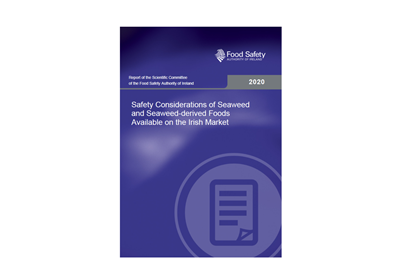Wednesday, 18 November 2020
Seaweed is a relatively underexplored source of human and animal nutrition, although there has been increased interest in recent years.
Market research has indicated that the amount of seaweed-flavoured foods and drinks available in Europe increased by 7% between 2011 and 2015, mainly due to the perceived health benefits of seaweed.
There are 570 known species of seaweed that have been identified in the waters off the 3,000 km coastline of Ireland
A number of chemical hazards have been associated with edible seaweed and are discussed in this report. The main areas of concern are linked to the relatively high iodine, cadmium and arsenic content of some seaweed species. There are also a number of biological hazards including marine biotoxins produced by opportunistic dinoflagellates, as well as potential physical hazards in the form of microplastics and nanoplastics.
This report provides an overview of the Irish seaweed industry, with an emphasis on food-related aspects including edible seaweed, food additives and animal feed. The consumption patterns of seaweed and seaweed-derived products in Ireland are also explored, with certain hazards and risks identified and recommendations put forward to ensure the continued safety of edible seaweed and seaweed products.

